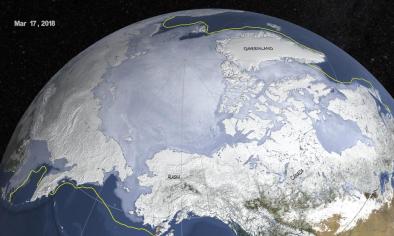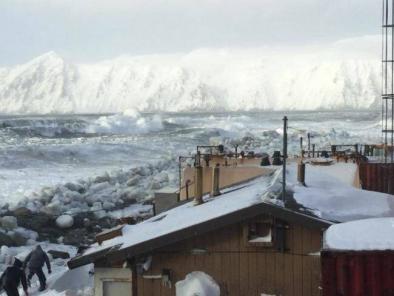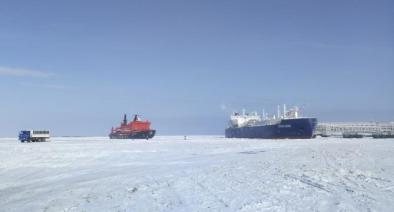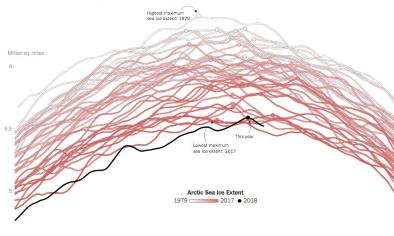North Pole surges above freezing in the dead of winter, stunning scientists
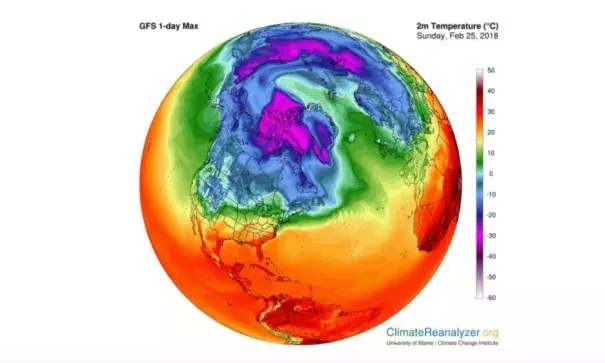
The sun won’t rise at the North Pole until March 20, and it’s normally close to the coldest time of year, but an extraordinary and possibly historic thaw swelled over the tip of the planet this weekend. Analyses show that the temperature warmed to the melting point as an enormous storm pumped an intense pulse of heat through the Greenland Sea.
Temperatures may have soared as high as 35 degrees Fahrenheit (2 degrees Celsius) at the pole, according to the U.S. Global Forecast System model. While there are no direct measurements of temperature there, Zack Labe, a climate scientist working on his PhD at the University of California at Irvine, confirmed that several independent analyses showed “it was very close to freezing,” which is more than 50 degrees (30 degrees Celsius) above normal.
The warm intrusion penetrated right through the heart of the Central Arctic, Labe said. The temperature averaged for the entire region north of 80 degrees latitude spiked to its highest level ever recorded in February. The average temperature was more than 36 degrees (20 degrees Celsius) above normal. “No other warm intrusions were very close to this,” Labe said in an interview, describing a data set maintained by the Danish Meteorological Institute that dates back to 1958. “I was taken by surprise how expansive this warm intrusion was.”
Such extreme warm intrusions in the Arctic, once rare, are becoming more routine, research has shown. A study published last July found that since 1980, these events are becoming more frequent, longer-lasting and more intense.
“Previously this was not common,” said lead author of the study Robert Graham, from the Norwegian Polar Institute, in an email. “It happened in four years between 1980-2010, but has now occurred in four out of the last five winters.”
Related Content
